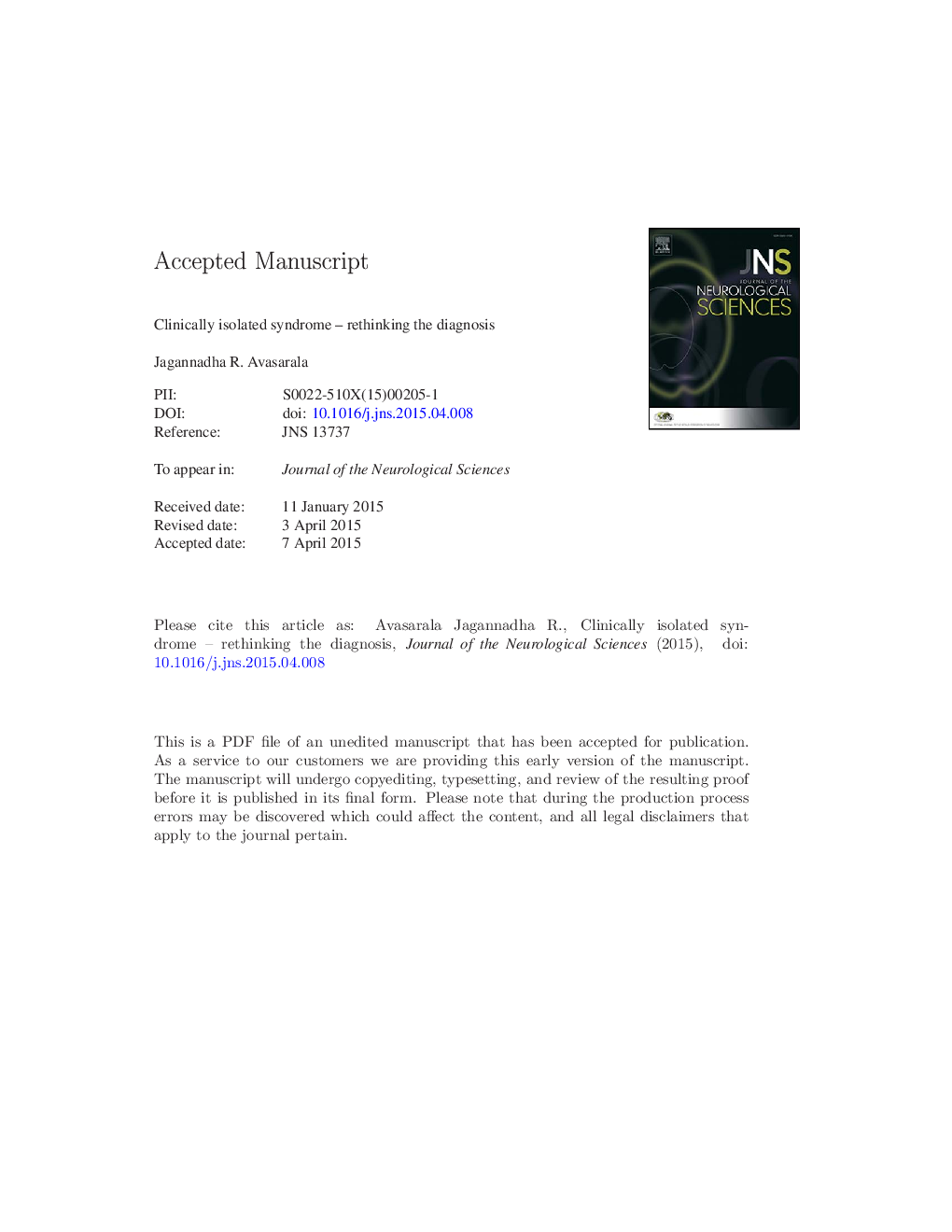| Article ID | Journal | Published Year | Pages | File Type |
|---|---|---|---|---|
| 8275960 | Journal of the Neurological Sciences | 2015 | 8 Pages |
Abstract
A diagnostic lacuna in clinically isolated syndrome (CIS) is the prognostic uncertainty of approximately 20% of patients who do not meet the radiological criteria based on magnetic resonance imaging (MRI) of the brain. A study by Tintore et al. noted that 23% of patients who had normal MRI findings but had oligoclonal bands (OCBs) in cerebrospinal fluid (CSF) developed clinically definite multiple sclerosis (CDMS), compared with 4% who had normal MRI findings but no OCBs in CSF (Tintore et al. 2008). Since a diagnosis of CIS cannot be made if MRI data are equivocal, the opportunity for early treatment is lost if non-radiological data are not taken into diagnostic consideration. In this article, a case for inclusion of cerebrospinal fluid data in the diagnosis of CIS is made, and a distinction is drawn in certain patient cohorts based on ethnicity, that demands urgent research. Certain ethnic cohorts such as African Americans (AAs) may have a higher risk of delayed diagnosis if CSF data are ignored. At the current time, the diagnosis of CIS continues to favor clinical and radiological evidence and this article aims to change that perspective.
Keywords
Related Topics
Life Sciences
Biochemistry, Genetics and Molecular Biology
Ageing
Authors
Jagannadha R. Avasarala,
